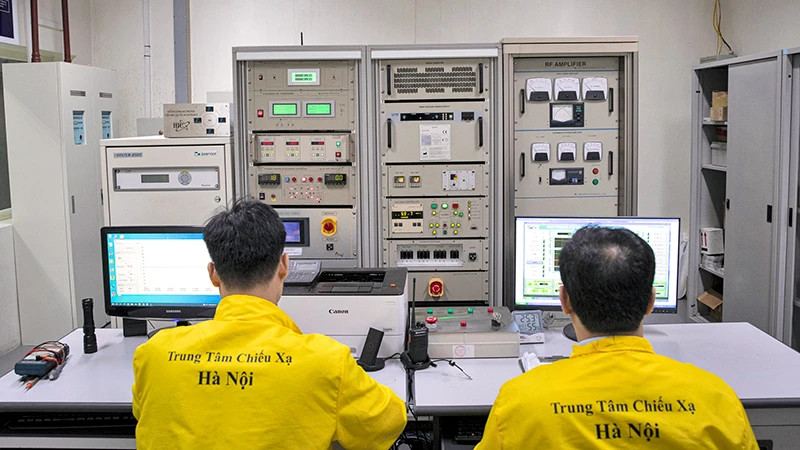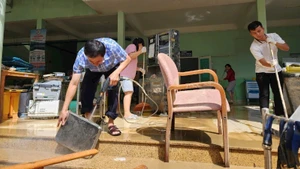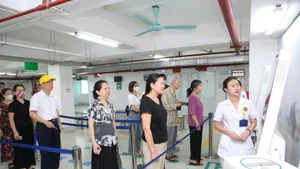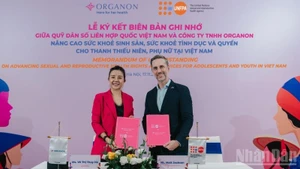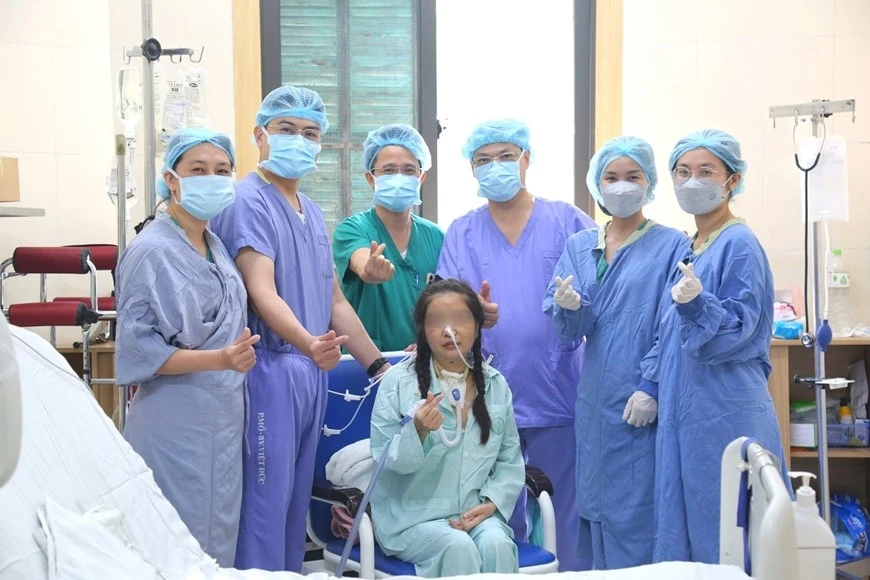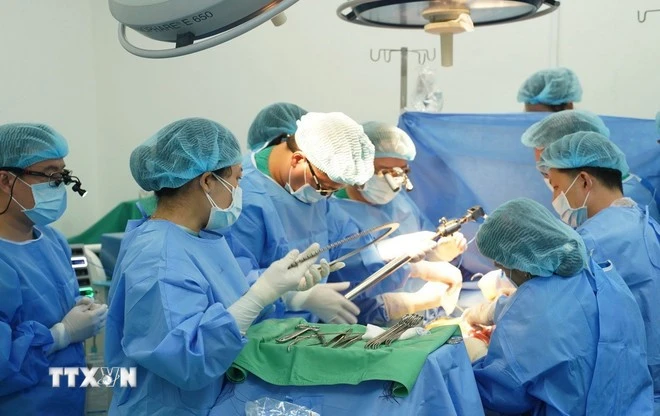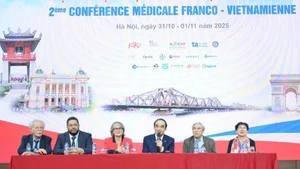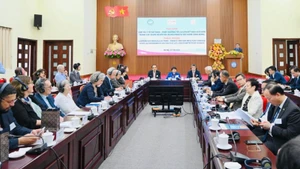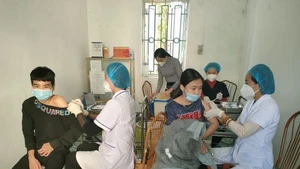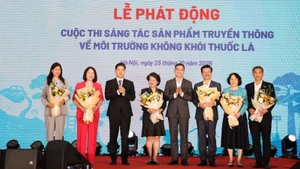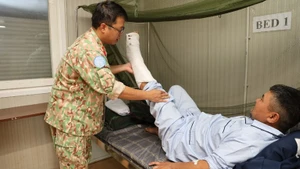This effort demonstrates the dedication of Vietnamese scientists to applying nuclear science in real-world healthcare, improving public health.
During a tour of the radiopharmaceutical production facilities, Nguyen Tuan Anh, MSc, Head of the Accelerator and Nuclear Electronics Department at the Hanoi Irradiation Centre, described the rigorous procedures involved in producing 18F-FDG, a radiopharmaceutical used in PET/CT scans for cancer diagnosis.
The production and preparation of radioactive substances are conducted under strict safety protocols. Access to these areas is highly controlled, with only trained and properly equipped staff allowed entry. Advanced safety systems, including alarms and secure locks, are in place to prevent unauthorised access to hazardous zones. Radiation exposure for staff is closely monitored and maintained within safe limits.
Since its launch in February 2023, the production line has operated in two shifts daily. Each shift involves seven workers, with the first shift running from 1 am to 6 am. The radiopharmaceuticals produced during this time are promptly delivered to hospitals for morning patient treatments. The second shift operates from 8 am to 12 am, ensuring an adequate supply for afternoon patient appointments.
This scheduling is critical due to the rapid decay of radiopharmaceuticals, which have a half-life of just a few hours. If not used within 12 hours, the drugs become ineffective. Patients at participating hospitals receive 18F-FDG injections before undergoing PET/CT scans, which provide detailed images for cancer diagnosis.
Currently, Vietnam has six cyclotron machines capable of producing radiopharmaceuticals. These machines are located at the Hanoi Irradiation Centre, the 108 Central Military Hospital, Cho Ray Hospital, Da Nang Hospital, and two facilities operated by Rang Dong Medical Company in Thu Duc City. However, due to various limitations, these machines are not yet running at full capacity.
“Because radiopharmaceuticals cannot be imported and demand for diagnostic and treatment services is high, the Hanoi Irradiation Centre operates at maximum capacity with two shifts daily to supply hospitals in Hanoi,” explained Associate Professor Dr Phan Viet Cuong, Director of the Hanoi Irradiation Centre.
The centre’s cyclotron, a KOTRON13 with an energy level of 13 MeV, was a gift from the government of the Republic of Korea in 2014. However, at that time, Vietnam’s Ministry of Health had no regulatory framework allowing non-hospital units to produce radiopharmaceuticals for PET/CT imaging. It was not until 2018 that the centre received its production license. By 2020, the production line was upgraded to meet GMP-WHO standards and began operations in February 2023.
Today, the Hanoi Irradiation Centre operates one of only three GMP-WHO-standard radiopharmaceutical production lines in Vietnam and one of seven in Southeast Asia and Asia (including Vietnam, Japan, the Republic of Korea, India, Mongolia, Singapore and Malaysia). This achievement has earned recognition from the International Atomic Energy Agency (IAEA), which considers the centre a model for sharing expertise with other countries in the region.
From February 2023 to November 2024, the centre has produced over 400 batches of radiopharmaceuticals, amounting to more than 200,000 mCi of Vinatom FDG. These products have been supplied to major hospitals in Hanoi, including K Hospital, Hanoi Oncology Hospital, 103 Military Hospital, Vinmec General Hospital, and Sun Hospital, facilitating PET/CT imaging for more than 15,000 cancer patients.
The centre is the only public institution under the Vietnam Atomic Energy Institute equipped with a cyclotron. It plays a key role in research, technology transfer, and consulting on radiopharmaceutical production using cyclotron technology.
According to Nguyen Quang Anh, MSc, Head of the Radiochemistry Department at the centre, developing radiopharmaceuticals for cancer theranostics is a growing trend in global nuclear medicine. The Hanoi Irradiation Centre is working to meet these advancements by researching new radiopharmaceuticals tailored to Vietnam’s healthcare needs.
The centre’s well-trained personnel form the foundation for its research initiatives. By collaborating with hospitals, the centre aims to understand the demand for radiopharmaceuticals and co-develop solutions. Current projects focus on radiopharmaceuticals for assessing cancer stages and treating neuroendocrine tumours and prostate cancer.
Investing in state-of-the-art research facilities and skilled personnel is essential for developing innovative radiopharmaceuticals. Such investments can reduce reliance on imports, lower costs, and increase accessibility for patients. Locally produced radiopharmaceuticals would enable more affordable treatments, reducing the financial burden on patients and healthcare insurance systems.
Despite its progress, the Hanoi Irradiation Centre still lacks specialised laboratories and cutting-edge equipment for advanced radiopharmaceutical research. Without strategic state support, private investments in cyclotron-based radiopharmaceutical production may lead to an oversupply of certain products in urban areas while leaving critical cancer therapies underdeveloped.
To ensure sustainable growth, Vietnam must adopt a comprehensive approach to managing and supporting radiopharmaceutical production. By prioritising research, regulation, and resource allocation, the country can enhance its nuclear medicine capabilities, providing better healthcare outcomes for all.
